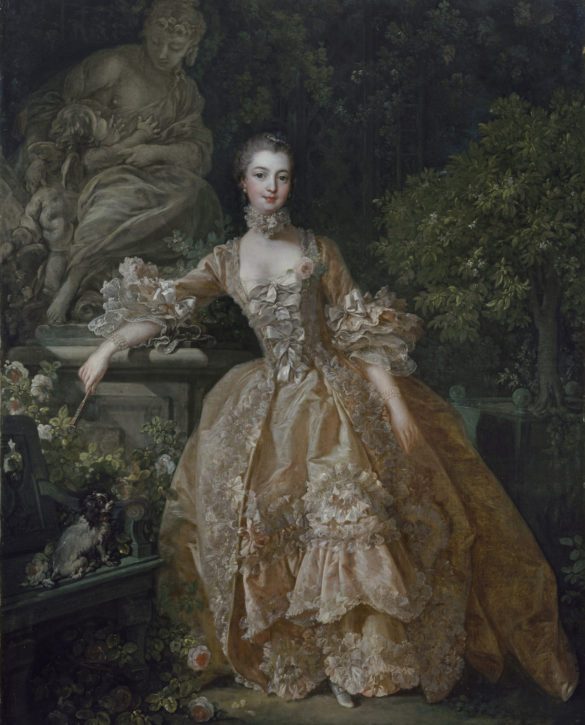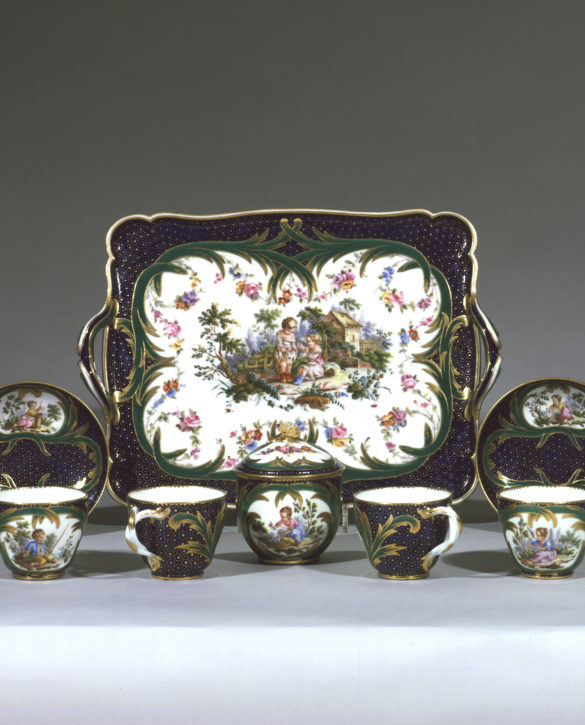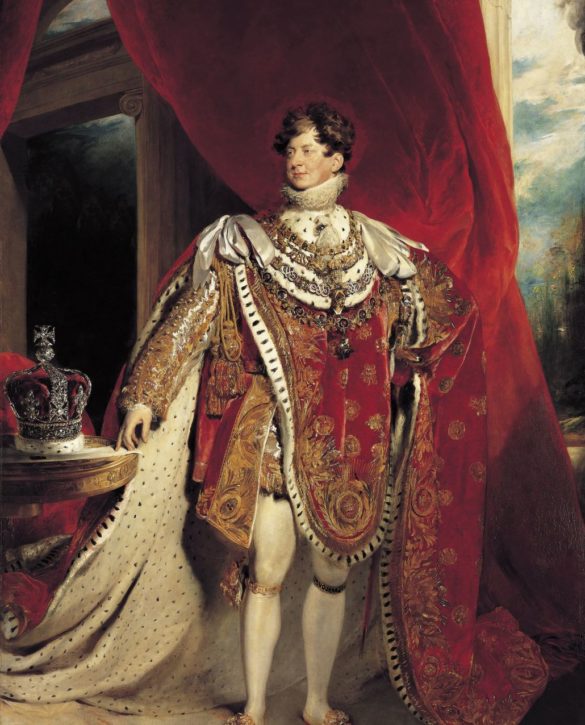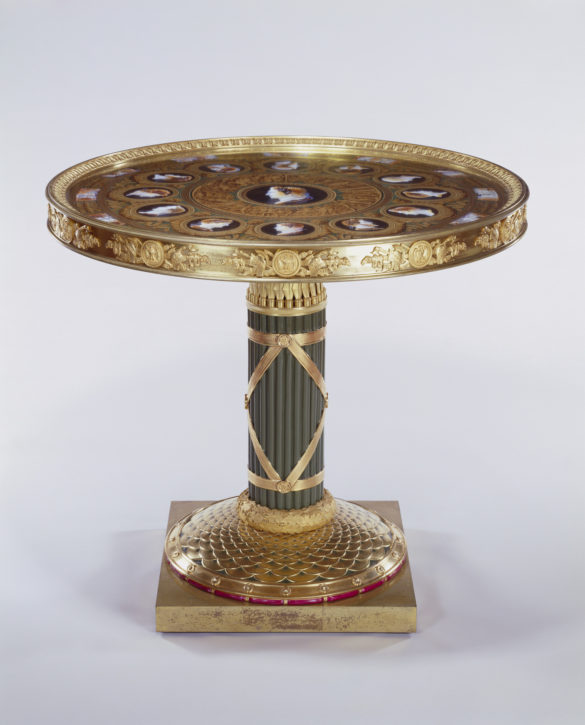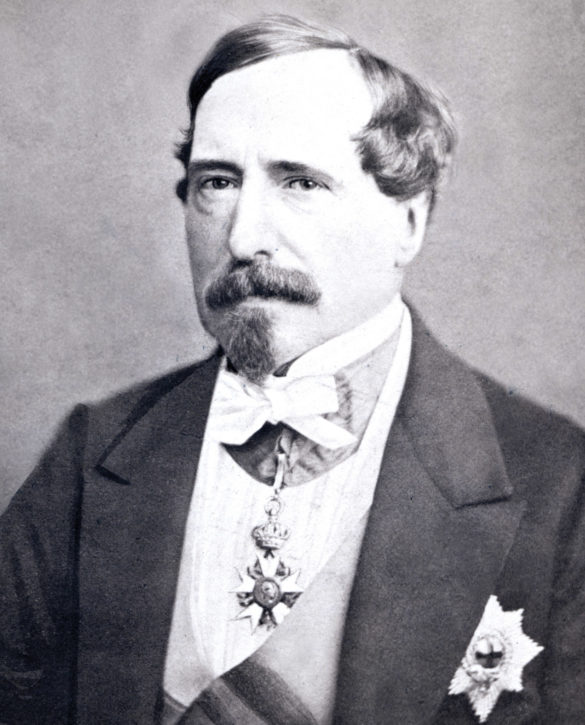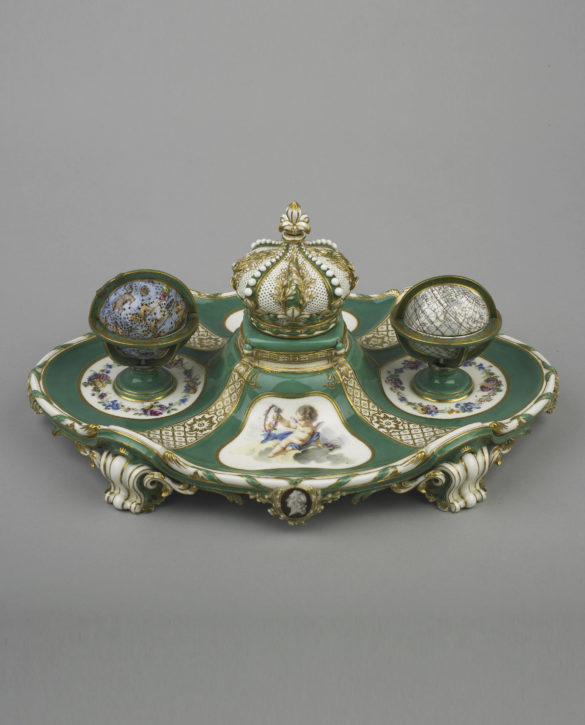MADAME DE POMPADOUR
Madame de Pompadour (1721-64) was an influential political advisor and patron of the arts as well as Louis XV’s mistress and friend. This portrait of her by François Boucher (1703-70), dating to 1759, which explores the themes of friendship and fidelity, is on display in the Oval Drawing Room at the Wallace Collection.
Under Madame de Pompadour’s influence, new designers and painters like Boucher and the modeller Ėtienne Maurice Falconet (1716-91), were encouraged to work for the Sèvres manufactory which began to develop a distinctive range of rich ground colours and specialise in inventive shapes and fine gilding. One of these colours, the pink, was frequently referred to in the eighteenth and nineteenth centuries as ‘rose Pompadour’.
Madame de Pompadour by François Boucher, 1759. Oil on canvas. (© The Wallace Collection, London. Inv. no. P418)

